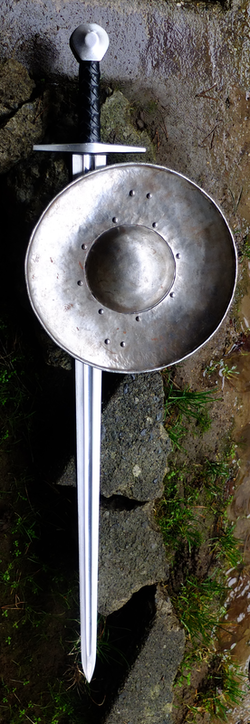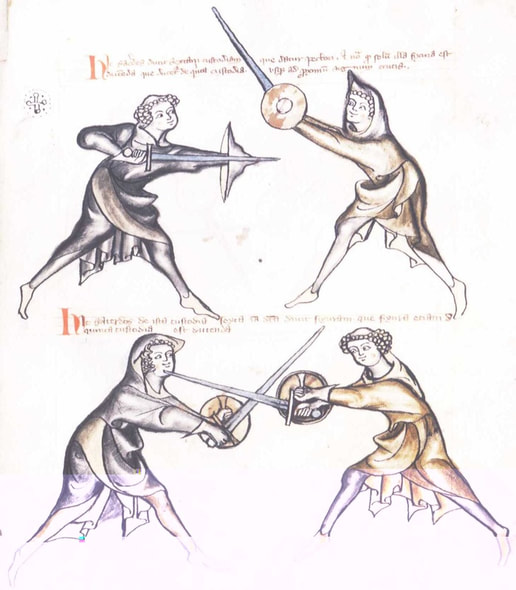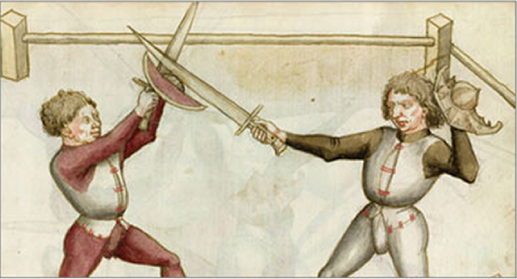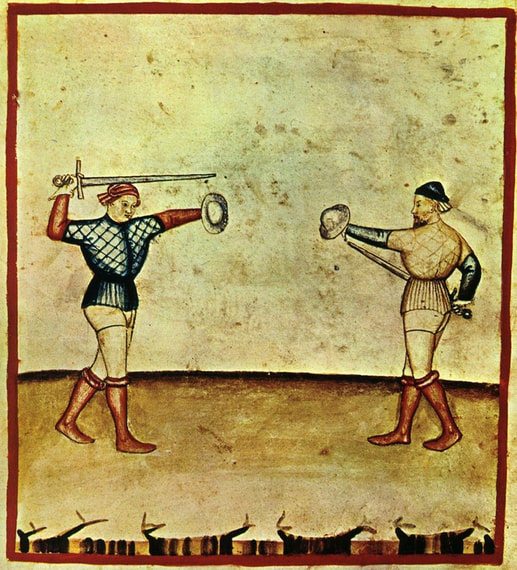THE SWORD AND BUCKLER

Believed to be the oldest surviving fencing manual in existence, Ms.I.33 - also known as the Walpurgis Fechtbuch - was written c.1295 and describes a comprehensive system of attack and defence with the sword and buckler, using many technical principles.
The method of fighting appears to have gained particular popularity among the German-speaking peoples, whose fight-masters recorded their own devices in a number of manuscripts and treatises, most notably Hans Talhoffer and Andres Liegnitzer.
The tradition continues well into the late 16th century, with some of the greatest fencing works of the Renaissance featuring the sword and buckler, including a number of magnificent Italian sources such as the Opera Nova of Achille Marozzo, written in 1536.
While the type of sword used in this combination varies enormously over time, from simple arming swords, falchions and messers of the 14th and 15th centuries, to the sideswords and rapiers of the 16th and 17th centuries, the buckler has also many different sizes and forms.
Most typically, it comprises of a circular steel plate with a domed centre, known as a boss, inside which a simple grip is fitted. Some bucklers, however, are highly elaborate, such as those depicted in the works of Kal and Talhoffer, featuring a deep concave shape, ridges, spikes and in one instance, a demonic face sticking out its tongue.
Other examples of bucklers have been found which are constructed from wooden laminate, with steel or iron bands as reinforcement.
Our primary sources for the study of sword and buckler are:
Ms.I.33 (known as the Walpurgis Fechtbuch), believed to be the oldest existing fight-manual in Europe and written c.1295
Ms.Thott.290.2 (Hans Talhoffer’s Fechtbuch) written in 1459, but with further references to Talhoffer’s other versions of the manuscript
Codex 44.A.8(commonly called the Codex Danzig) compiled anonymously in 1452 and often attributed to the German fight-master Peter von Danzig, although the Sword and Buckler section is named as being the work of Andres Liegnitzer



Find medieval combat sources and much more by visiting the excellent Wiktenauer HEMA resource portal